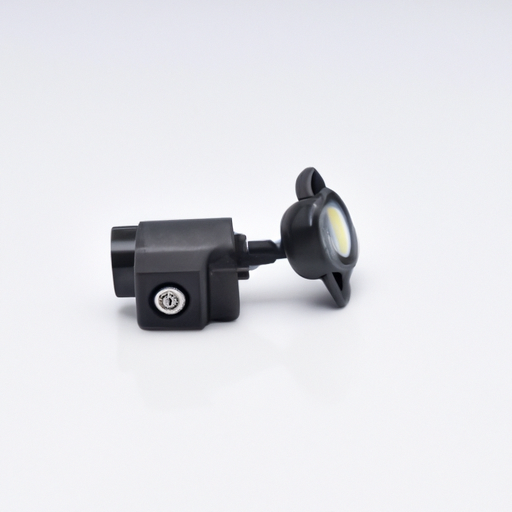What are the product standards for Adjustable sensor?
Product standards for adjustable sensors are essential to ensure that they meet the necessary requirements for quality, safety, and performance. These standards help manufacturers produce reliable and consistent products that meet the needs of consumers and comply with regulations. In this article, we will discuss the product standards for adjustable sensors and why they are important.

One of the most important product standards for adjustable sensors is accuracy. Sensors must be able to provide precise and consistent measurements to ensure that they can be relied upon for critical tasks. The accuracy of a sensor is typically expressed as a percentage of the full-scale measurement range. For example, a sensor with an accuracy of ±1% can measure a parameter within 1% of the actual value.
Another important product standard for adjustable sensors is sensitivity. Sensitivity refers to the smallest change in the parameter being measured that the sensor can detect. A sensor with high sensitivity can detect small changes in the parameter, making it more suitable for applications that require precise measurements. Sensitivity is typically expressed as a percentage of the full-scale measurement range or in units such as millivolts per degree Celsius.
In addition to accuracy and sensitivity, adjustable sensors must also meet standards for reliability and durability. Sensors must be able to withstand harsh environmental conditions, such as temperature extremes, humidity, vibration, and shock. They must also be resistant to electromagnetic interference and other sources of noise that can affect their performance. Reliability standards ensure that sensors can operate continuously without failure, while durability standards ensure that sensors have a long service life.
Product standards for adjustable sensors also include requirements for calibration and traceability. Sensors must be calibrated regularly to ensure that they continue to provide accurate measurements. Calibration involves comparing the sensor's output to a known reference standard and making any necessary adjustments. Traceability standards require manufacturers to maintain records of calibration procedures and results, as well as the origin of components and materials used in the sensor.
Compliance with product standards for adjustable sensors is essential for manufacturers to ensure that their products meet the necessary requirements for quality, safety, and performance. In many industries, such as automotive, aerospace, and medical devices, sensors must comply with specific standards set by regulatory bodies or industry organizations. For example, sensors used in medical devices must comply with standards set by the Food and Drug Administration (FDA) in the United States.
In conclusion, product standards for adjustable sensors are essential to ensure that these devices meet the necessary requirements for quality, safety, and performance. These standards cover aspects such as accuracy, sensitivity, reliability, durability, calibration, and traceability. Compliance with product standards is crucial for manufacturers to produce reliable and consistent products that meet the needs of consumers and comply with regulations. By adhering to product standards, manufacturers can ensure that their adjustable sensors perform accurately and reliably in a wide range of applications.
Product standards for adjustable sensors are essential to ensure that they meet the necessary requirements for quality, safety, and performance. These standards help manufacturers produce reliable and consistent products that meet the needs of consumers and comply with regulations. In this article, we will discuss the product standards for adjustable sensors and why they are important.

One of the most important product standards for adjustable sensors is accuracy. Sensors must be able to provide precise and consistent measurements to ensure that they can be relied upon for critical tasks. The accuracy of a sensor is typically expressed as a percentage of the full-scale measurement range. For example, a sensor with an accuracy of ±1% can measure a parameter within 1% of the actual value.
Another important product standard for adjustable sensors is sensitivity. Sensitivity refers to the smallest change in the parameter being measured that the sensor can detect. A sensor with high sensitivity can detect small changes in the parameter, making it more suitable for applications that require precise measurements. Sensitivity is typically expressed as a percentage of the full-scale measurement range or in units such as millivolts per degree Celsius.
In addition to accuracy and sensitivity, adjustable sensors must also meet standards for reliability and durability. Sensors must be able to withstand harsh environmental conditions, such as temperature extremes, humidity, vibration, and shock. They must also be resistant to electromagnetic interference and other sources of noise that can affect their performance. Reliability standards ensure that sensors can operate continuously without failure, while durability standards ensure that sensors have a long service life.
Product standards for adjustable sensors also include requirements for calibration and traceability. Sensors must be calibrated regularly to ensure that they continue to provide accurate measurements. Calibration involves comparing the sensor's output to a known reference standard and making any necessary adjustments. Traceability standards require manufacturers to maintain records of calibration procedures and results, as well as the origin of components and materials used in the sensor.
Compliance with product standards for adjustable sensors is essential for manufacturers to ensure that their products meet the necessary requirements for quality, safety, and performance. In many industries, such as automotive, aerospace, and medical devices, sensors must comply with specific standards set by regulatory bodies or industry organizations. For example, sensors used in medical devices must comply with standards set by the Food and Drug Administration (FDA) in the United States.
In conclusion, product standards for adjustable sensors are essential to ensure that these devices meet the necessary requirements for quality, safety, and performance. These standards cover aspects such as accuracy, sensitivity, reliability, durability, calibration, and traceability. Compliance with product standards is crucial for manufacturers to produce reliable and consistent products that meet the needs of consumers and comply with regulations. By adhering to product standards, manufacturers can ensure that their adjustable sensors perform accurately and reliably in a wide range of applications.




